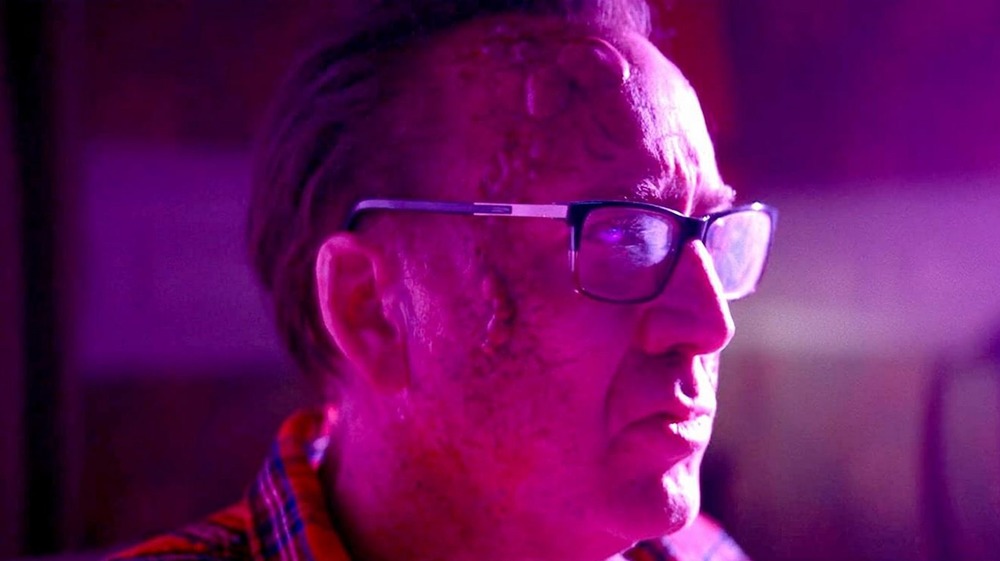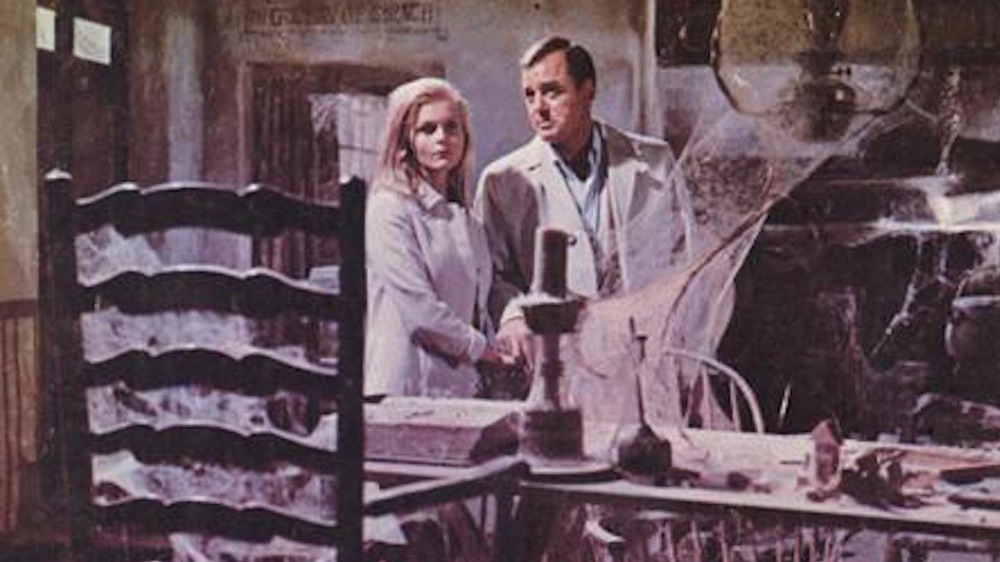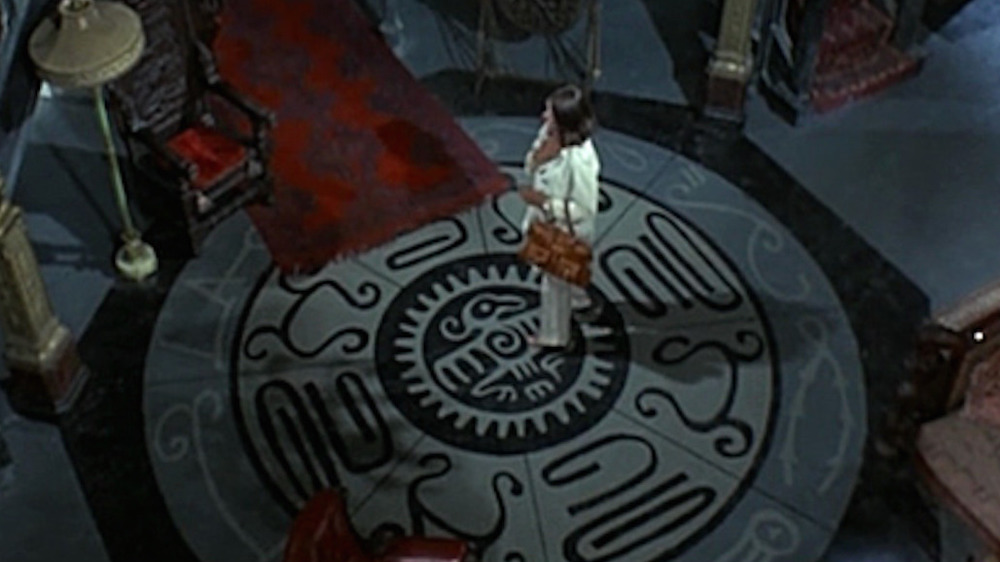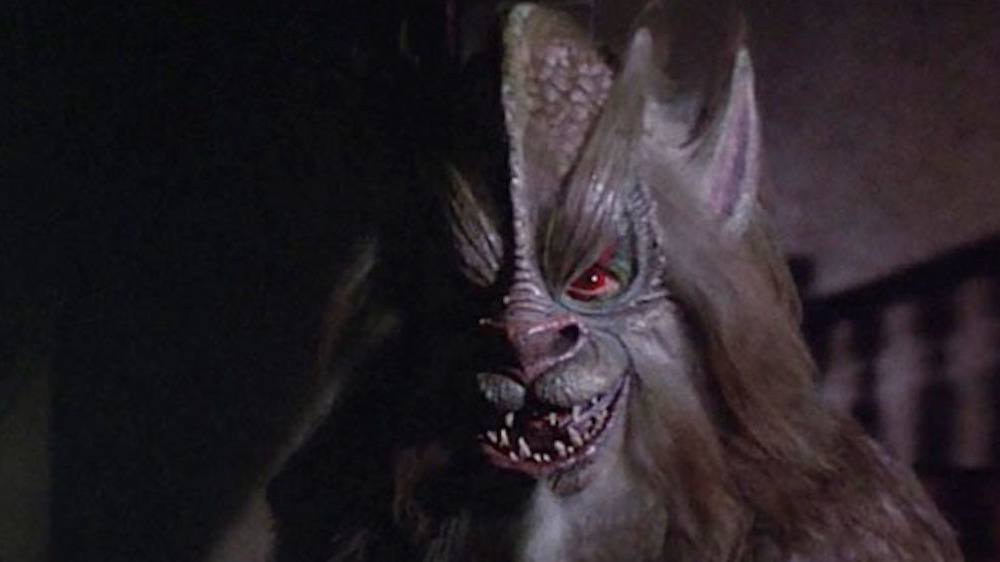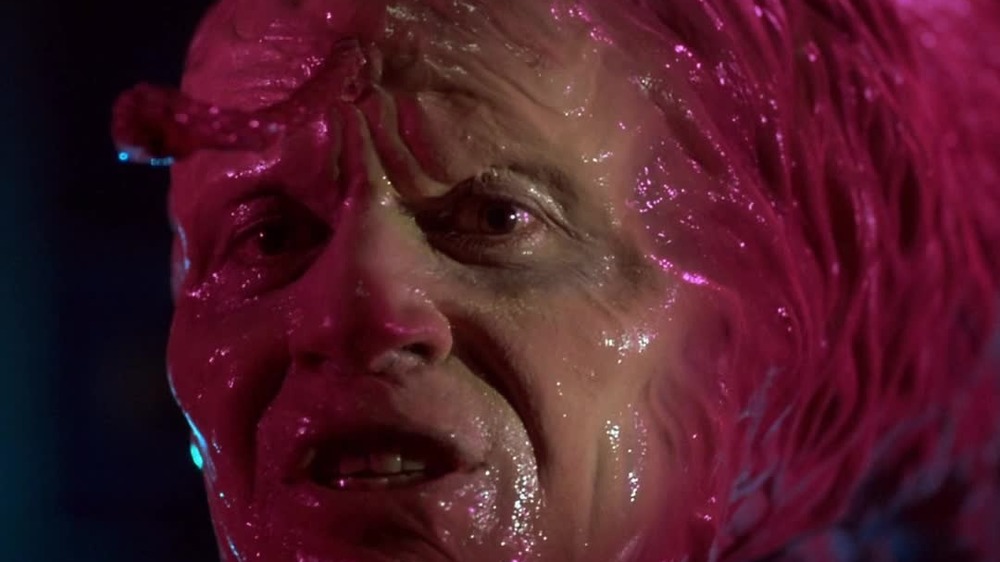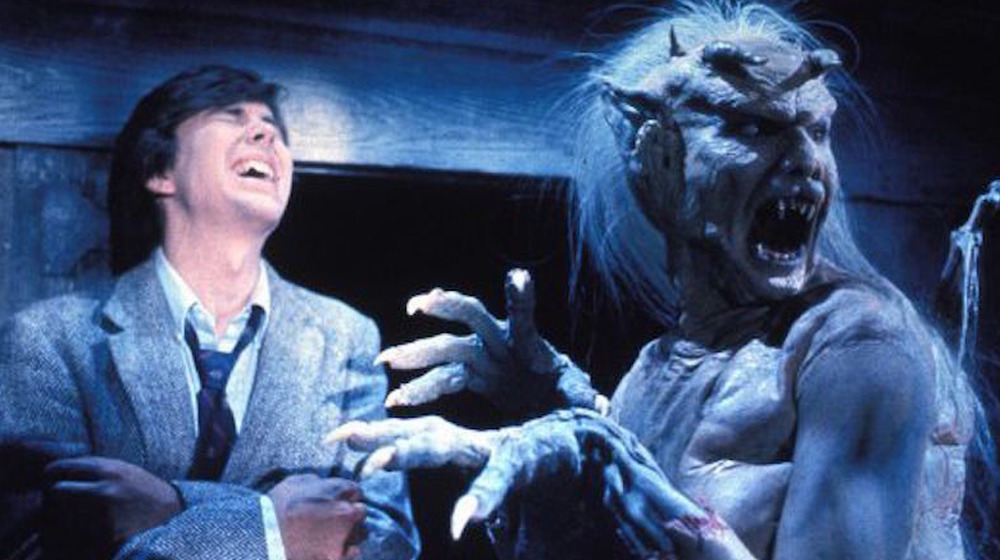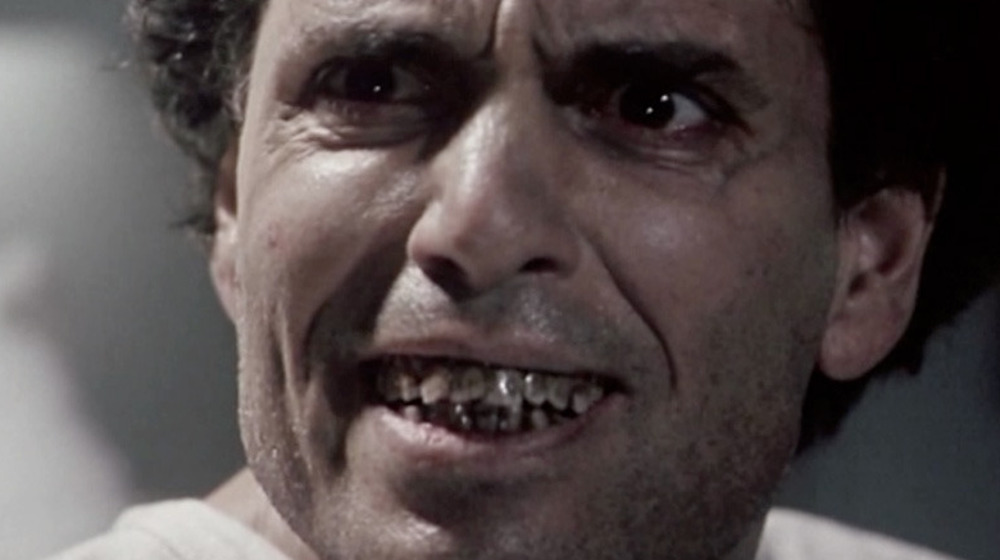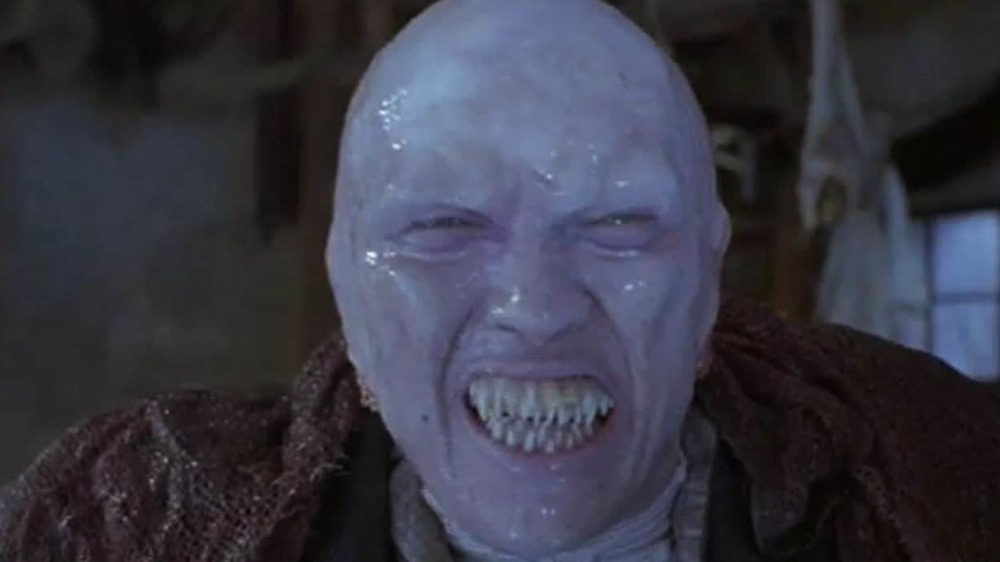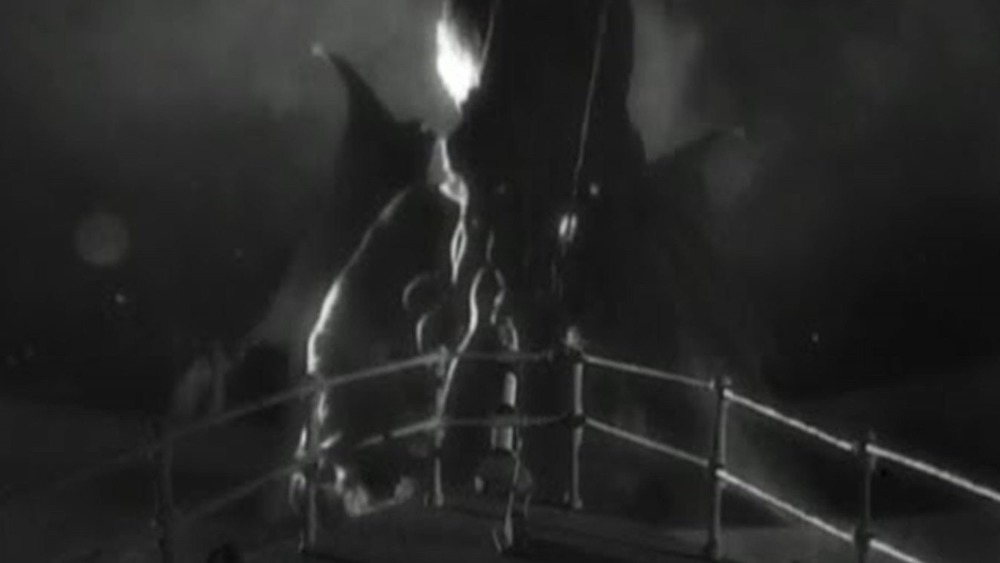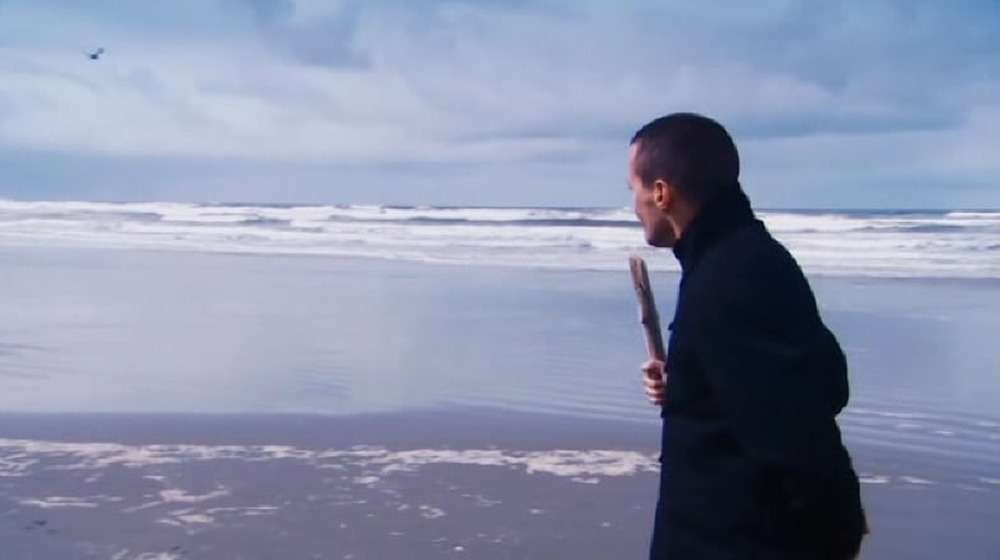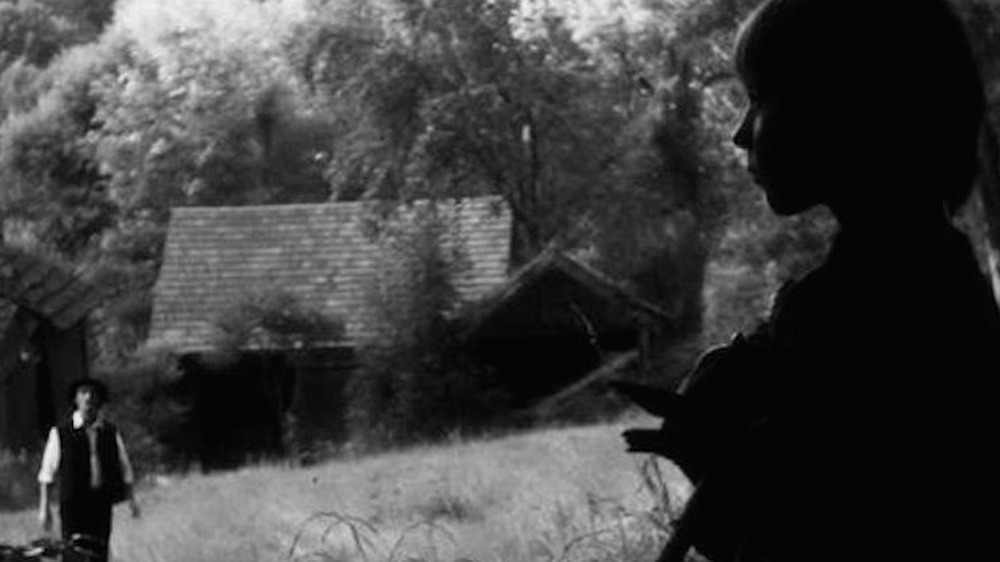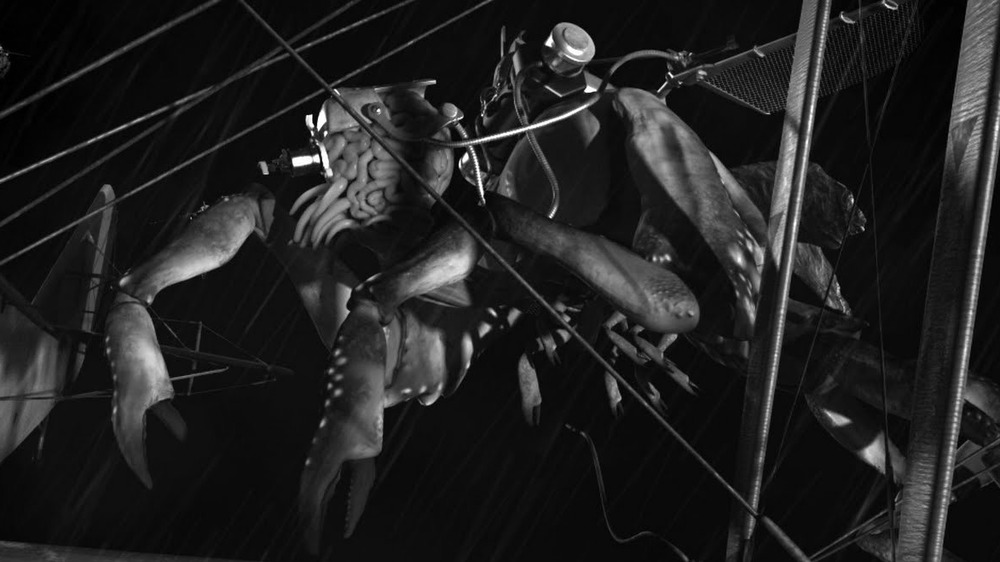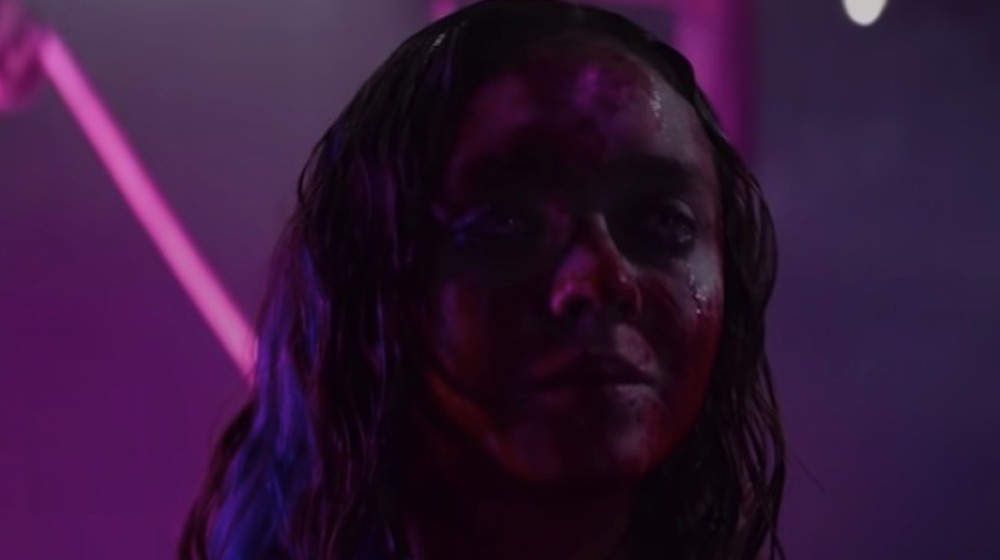Underrated Lovecraft Movie Adaptations
Like Edgar Allan Poe and Stephen King, the fiction of H.P. Lovecraft has been adapted to the screen on countless occasions. Filmmakers have returned to his stories of cosmic horror and dark science again and again for many reasons: the nightmarish scope of his imagination and the inescapable dread summoned up by his alien gods — the "Great Old Ones," like Cthulhu, whose limitless power makes it one of the most memorable monsters in popular culture. Though his language can be archaic, the horror in Lovecraft's best work is all-consuming and unforgettable — in short, perfect material for any aspiring horror director.
Among the most memorable takes on his body of fiction are Stuart Gordon's Re-Animator, while the HBO series Lovecraft Country, while not a direct translation, does a fine job of encapsulating the tone and scope of his work. But there are numerous other feature and short films based on Lovecraft's stories, many of which will satisfy diehard horror fans and devotees of the author's work. Following are some of the lesser-known but still worthwhile screen versions of Lovecraft's enduring stories.
Enter The Shuttered Room if you dare
Based on a posthumous "collaboration" between Lovecraft and his friend and literary executor, August Derleth – who fashioned the story and many others from notes, outlines, and fragments left behind after Lovecraft's death — the 1967 British production The Shuttered Room is one of the earliest film adaptations of the horror pioneer's fiction. It was preceded only by Roger Corman's The Haunted Palace (based loosely on The Case of Charles Dexter Ward) in 1963 and Die, Monster, Die (the first of many screen adaptations of "The Colour Out of Space") in 1965.
The film, by Emmy-winning film and television director David Greene (Roots), borrows only elements of the source material, which itself includes references to Lovecraft's "The Dunwich Horror" and The Shadow over Innsmouth. But Room still manages to generate its share of shivers while following married couple Gig Young and Carol Lynley, whose return to her childhood home in Dunwich, Massachusetts (actually Norfolk and Kent in England), reveals terrible secrets about her past and the monstrous occupant of a ruined mill. Said mill was a real 18th century structure in the village of Hardingham, whose residents were reportedly dismayed to discover that the film's producers had purchased the property to destroy it in a blaze that brings the picture to its end.
The Dunwich Horror: psychedelic Lovecraft
The cosmic and mystical elements of Lovecraft's fiction — space gods, dimensional travel, forgotten magic — found favor among the counterculture of the 1960s, which in turn led to a renaissance of sorts for the horror author. Film producers seeking to tap into that audience's ticket-buying potential also resulted in a modest boom in Lovecraft film adaptations during the 1960s and 1970s.
Directed by Daniel Haller — who served as production designer on The Haunted Palace and helmed Die, Monster, Die! – and co-written by future Oscar winner Curtis Hanson (L.A. Confidential), 1970's The Dunwich Horror starred Dean Stockwell (Battlestar Galactica) as Wilbur Whateley, a student of the occult who sought Lovecraft's infamous book, the Necronomicon (which lent its name to the ancient spell book in the Evil Dead franchise), to bring his father, the monstrous Yog-Sothoth, to Earth. The film deviates from the source material — most notably in the depiction of Wilbur, whose hipster vibe is a far cry from the half-human in Lovecraft's story — and often feels dated by an abundance of psychedelic imagery and wobbly special effects. But Haller does well in evoking the reality-warping qualities of Lovecraft's Old Ones, Stockwell is the right kind of creepy-intense, and there's a terrific freakout-styled score by Les Baxter.
A 2009 film adaptation took greater liberties with the story, but did benefit from the presence of Stockwell, who played the heroic professor battling Wilbur (Re-Animator's Jeffrey Combs) for the Necronomicon.
Night Gallery twice adapted Lovecraft for TV
The Rod Serling-hosted anthology series Night Gallery, which ran on NBC from 1970 to 1972, drew on a number of notable horror authors and stories for its episodes, including several authors with connections to Lovecraft such as August Derleth, Algernon Blackwood, and Arkham House co-founder Donald Wandrei. Two of Lovecraft's own stories were also adapted during its second season — Serling himself wrote a script based on "Cool Air," while series producer Jack Laird directed a take on "Pickman's Model."
Both episodes are not only among Night Gallery's best, but also two of the best screen versions of Lovecraft's work, with an abundance of Gothic atmosphere and gruesome special effects. "Cool Air" is a milder sort of macabre, with Serling adding romance to the story about a doctor (Henry Darrow) and his mysterious aversion to warm temperatures. "Pickman's Model" is the episode remembered by most fans, due largely to the makeup effects design for the subterranean ghoul that serves as inspiration for artist Bradford Dillman's grotesque paintings. John Chambers, an Oscar winner for the 1968 film Planet of the Apes, and Leonard Engleman (the '84 Ghostbusters) used foam rubber molds of the scaly skin created for Creature from the Black Lagoon in 1954 for their monster, which netted them an Emmy nomination in 1972. Lovecraft also inspired a lesser segment, "Professor Peabody's Last Lecture," in which Carl Reiner learns the hard way that it's a bad idea to mock the Old Ones.
From Beyond: even freakier than Re-Animator
Though perhaps not as well-known or appreciated by as wide an audience as Re-Animator, 1986's From Beyond offers another outrageously unique and gore-soaked take on Lovecraft's fiction from co-writer/director Stuart Gordon. The film adopts the core premise of Lovecraft's 1920 short story, which envisions a machine called a "resonator" that can stimulate the user's pineal gland (a pea-sized gland in the brain that may help regulate sleep and some hormonal levels) and allow them to perceive other dimensions, as well as the beings that live there.
Gordon also echoes Lovecraft's notion that seeing those creatures might prove bad for the viewer's sanity, but as with Re-Animator, ups the stakes to nightmarish levels. In the film, the resonator grants its users unimaginable power and pleasure, but at a terrible cost: its inventor, Dr. Edward Pretorius (a name-check of Ernest Thesiger's creepy scientist in Bride of Frankenstein), is so driven by his lusts that he mutates into a monstrosity, while Re-Animator vet Jeffrey Combs, as Pretorius's assistant, develops a taste for human brains. From Beyond is freaky to its core, but also retains Lovecraft's vision of terrors that exist just beyond the realm of our perception.
The Unnamable: fun B-movie Lovecraft
A recurring character in several of Lovecraft's stories, as well as numerous Mythos-related works, is Randolph Carter, an antiquarian who encounters an array of monstrous beings and travels to inter-dimensional worlds. A slightly different version of Carter appears in 1925's "The Unnamable," which was loosely adapted for a 1988 feature of the same name.
In the film, Carter is a student at Lovecraft's Miskatonic University who accepts a challenge from a goofball classmate to join him, a pair of jocks and their girlfriends for an evening of ghost stories at a house occupied by a former warlock. Though much of the film's running time is devoted to the characters wandering around the (modest-sized but seemingly endless) house before meeting grisly fates, director Jean-Paul Ouellette invests his low-budget feature with more energy than most direct-to-video horror features, and benefits from an alarming female demon that boosts the film's third act. Ouellette and members of his cast would return for a 1992 sequel, The Unnamable II: The Statement of Randolph Carter, which borrows its name (but little of its plot) from another Carter adventure.
The Resurrected: the Lovecraft movie that got away
In his second and final effort as director (after Return of the Living Dead), Alien and Total Recall co-writer Dan O'Bannon oversaw this 1992 adaptation of Lovecraft's The Case of Charles Dexter Ward which, despite positive reviews for his unique approach to the material and some impressive practical effects, only received a modest rollout on home video.
Chris Sarandon (Fright Night) stars as Ward, a chemical engineer obsessed with his ancestor, a 18th century necromancer. O'Bannon and writer Brent V. Friedman add a layer of noir to the material with private detective John Terry (Lost), who is hired by Sarandon's wife (Jane Sibbert) to investigate her husband's increasingly unstable behavior. The horror and mystery genres mix well under O'Bannon's guidance, and The Resurrected benefits from Sarandon's performance as both Ward and his ancestor, as well as gruesome monster makeup effects. Unfortunately, its distributor, Interstar Releasing, was shuttered by its parent company, Westinghouse Broadcast, which doomed the pic to a VHS-only release.
Stuart Gordon returns to Lovecraft with Dagon
After his initial success with Re-Animator, Stuart Gordon returned to the work of H.P. Lovecraft on several occasions throughout his career : he drew on "The Outsider" for his 1995 feature Castle Freak, and presented a loose adaptation of "The Dreams in the Witch-House" for the Masters of Horror anthology series in 2005. Between these projects, Gordon also helmed Dagon, a Spanish production which is an in-name-only adaptation of Lovecraft's 1917 story about the discovery of humanoid underwater creatures in the Pacific.
The majority of Gordon's Dagon actually draws on The Shadow Over Innsmouth, a novella (penned in 1931 and published in 1936) about a remote community where inbreeding with Lovecraft's piscine monstrosities, the Deep Ones, has resulting in half-human, half-fish beings. Gordon delves deep into the nastier elements of such an interaction, including gallons of blood in various human sacrifices, tentacled, toothy man-fish mutations, and an impressive third-act appearance by the monster-god itself, a Cthulhu-like Father Dagon.
The Call of Cthulhu: silent, black and white, and scary
Lovecraft's 1926 magnum opus, "The Call of Cthulhu," which details the rise of a global cult devoted to the colossal octopoid monstrosity Cthulhu, posed several problems for any potential film adaptation. The story itself is told by a narrator gathering information from seemingly unconnected print sources — scholarly notes, news items, a police report — which in print form, adds a layer of mystery, but feels disjointed as a visual device. There's also the problem of Cthulhu itself, described as "a mountain [that] walked" which caused insanity in those who viewed it — something that would require expansive (and expensive) visual effects.
Enter the H.P. Lovecraft Historical Society (HPLHS), a group of former gamers turned producers of a diverse array of Lovecraftian content, including podcasts, audio books, music, and several movies. They came up with a novel solution for the story's unwieldy structure: they made Call as a silent movie. The approach — which the HPLHS dubs "Mythoscope" — works surprisingly well: silent movies were told in a fragmentary way that perfectly reproduces the jumble of sources that spell out the monster's arrival. It also places the story in its proper time frame, and the limited special effects allow the filmmakers to produce a budget-conscious but still impressive stop-motion Cthulhu. The success of Call allowed the HPLHS to produce a second Lovecraft adaptation, The Whisperer in Darkness, told in the style of Universal horror of the 1930s.
Cthulhu meets Tori Spelling
One of the more unique interpretations of Lovecraft's fiction, the 2007 LGBTQ-themed Cthulhu, freely folds the author's cosmic horror and forbidden religion into an indie drama about prejudice and religious hypocrisy. Though its title would suggest a screen version of "The Call of Cthulhu," director Daniel Gildark's film actually draws on The Shadow Over Innsmouth for its story of a gay history professor who returns to his small Pacific Northwest hometown to find that the residents are worshiping ancient sea gods.
Gildark draws parallels between the rigid beliefs of the cult to the intolerance faced by the professor outside his town's borders, which adds a layer of emotional depth to the material. And if some of his choices are offbeat — like the casting of Tori Spelling as the town's seductress — he does manage to produce a film that echoes the slow-boiling terror in Lovecraft's source material while also making a statement about a community's struggles in the face of long-standing religious and social beliefs.
Die Farbe gets the Color right
Over the past three decades, Lovecraft's sizable roster of short stories and his enduring popularity have made him a go-to for any medium, from films and television to games, comics, audio books, songs, and even musicals. Dozens upon dozens of short films have also been made from Lovecraft's stories, and one of the most stylish and eerie of these is 2010's Die Farbe (The Color), which moves Lovecraft's The Colour Out of Space to Germany.
Director Huan Vu retains much of the source material, which concerns a meteorite that, upon crashing to Earth, produces a strange "color" that impacts the plants, animals, and finally, the people on a remote farm. It may seem to be a strange choice to shoot a film about an alien color in black and white, but it's a clever one, too — since the color is supposed to be unlike anything on Earth, the audience must use its imagination to envision it (though Huan also adds a tinged CG effect). The stark shadows of the photography and slow but steady pace of the film ultimately generate more chills than most full-color, bigger-budgeted takes on the story.
Whisperer in Darkness: fighting fungi
As mentioned elsewhere, The Whisperer in Darkness was the H.P. Lovecraft Historical Society's (HPLHS) follow-up to its critically acclaimed adaptation of "The Call of Cthulhu." Again, the film — their first feature-length project with sync sound — reaches into film history for its look; here, they adopt the deep, Expressionist shadows of Universal's horror cycle of the 1930s. The story also hews closely to Lovecraft's 1931 novella, a rare straight-ahead science fiction story about the Mi-Go, a race of winged extraterrestrial fungi that worship the demonic alien deities known as the Outer or Other Gods.
The HPLHS do a fine job of building atmosphere and tension with malevolent aliens assuming the bodies of humans, which is where the Lovecraft story ends, but also add an action-packed coda which sees the film's hero take to the skies to fight the Mi-Go in a pitched air battle. The ambitious project was funded in part by game designer Sandy Petersen (DOOM, Age of Empires), who wrote Chaosium's Call of Cthulhu RPG.
Color Out of Space: alpacas, aliens, and Nic Cage
Though he never shied away from grisly images in his work, Lovecraft himself might have been surprised to see the graphic excesses that some filmmakers used to adapt his stories; one wonders what the staid New Englander would have made of Re-Animator, From Beyond, and Richard Stanley's Color Out of Space, which really puts the cosmic in "cosmic horror." The South African writer-director, best known for Dust Devil (and his ill-fated attempt to remake The Island of Dr. Moreau), recruited none other than Nicolas Cage to play the head of a farming family that undergoes bizarre transformations after a meteorite begins to produce a strange and powerful "color."
Stanley pulls out all the stops in depicting the effects of the alien presence on anything it touches; the results, from tainted water to merged alpacas, are frightening, and barely require Cage to kick into eccentric acting overdrive to heighten the sense of otherworldliness. The critical success of Color spurred Stanley to announce that he planned to make a trilogy of Lovecraft films, with the next project a new version of "The Dunwich Horror" – bringing us nearly full circle in this review of little-seen but watch-worthy Lovecraft movies.
